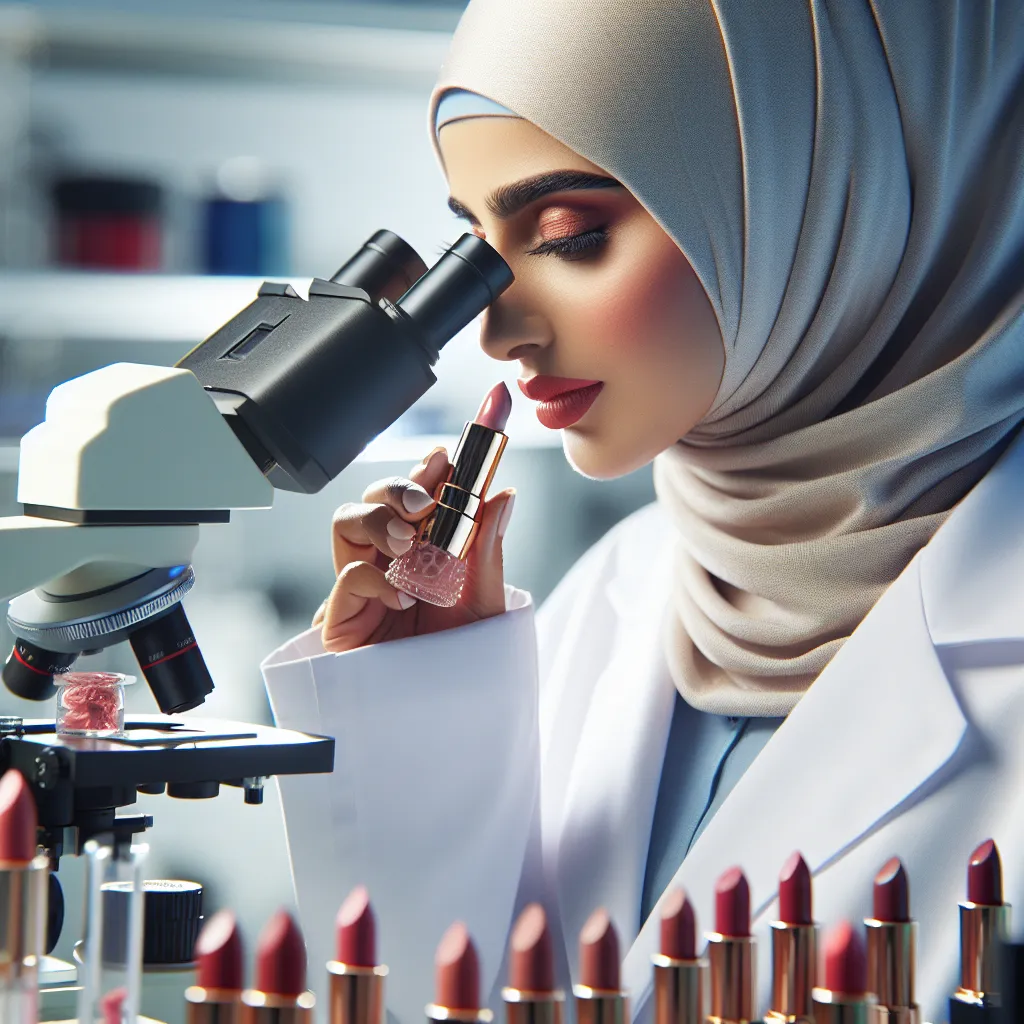The Chemistry of Long-lasting Lipstick: What Makes It Stay Put?
Long-lasting lipstick has become a holy grail beauty staple for many makeup enthusiasts around the world. The quest for a lipstick that stays put all day long has led to significant advancements in cosmetic chemistry. The secret behind the longevity of these lipsticks lies in the formulation and the chemistry of the ingredients used.
One of the key factors in long-lasting lipstick is the use of ingredients that enhance its staying power. These ingredients include film-formers, silicones, and waxes that create a durable layer on the lips, preventing the lipstick from smudging or fading easily. Additionally, the incorporation of pigments with better adherence to the lips contributes to the longevity of the color.
In the realm of organic cosmetics, consumers are increasingly seeking long-lasting lipstick options that are free from synthetic chemicals and potentially harmful ingredients. The demand for organic cosmetics has led to the development of long-lasting lipsticks that utilize natural ingredients such as plant-based waxes, oils, and pigments. These natural components work in harmony to provide color and staying power while aligning with the preferences of environmentally conscious consumers.
To cater to the growing demand for organic cosmetics, beauty brands are formulating long-lasting lipsticks that offer both performance and peace of mind. Consumers can now enjoy the confidence of a lipstick that stays put throughout the day, knowing that it contains natural and organic ingredients, free from harsh chemicals and additives.
For more information on organic cosmetics, you can visit organic cosmetics.
As an author specializing in beauty and cosmetics, understanding the chemistry behind long-lasting lipstick is crucial to providing readers with valuable insights into the products they use. By diving into the science of long-lasting lipstick, we can appreciate the innovation and research that goes into creating cosmetics that not only look stunning but also endure the wear and tear of daily life.
The Chemistry of Long-lasting Lipstick: What Makes It Stay Put?
When it comes to long-lasting lipstick, the chemistry behind its staying power is a fascinating aspect to explore. The key to a lipstick’s longevity lies in the formulation, particularly the ingredients that make it stay put. One of the primary components that contribute to the longevity of lipstick is the use of film-forming polymers. These polymers create a flexible film on the lips once the lipstick is applied, helping it adhere and stay in place for an extended period.
In addition to film-forming polymers, the inclusion of silicone oils in lipstick formulations also plays a crucial role in its long-lasting nature. Silicone oils form a breathable barrier on the lips, enhancing the lipstick’s resistance to fading, smudging, or transferring. Moreover, the presence of volatile and non-volatile silicones contributes to the comfortable feel of long-lasting lipsticks while ensuring that the color stays vibrant throughout the day.
Another vital aspect of long-lasting lipstick chemistry is the incorporation of waxes and emollients. These ingredients not only provide the desired texture and creaminess to the lipstick but also contribute to its longevity by creating a protective layer over the lips. This layer helps seal in the color and prevents it from budging, thus ensuring a prolonged wear time.
Furthermore, the use of pigments treated with surface-treated pigments, which are coated with materials like titanium dioxide or other compounds, enhances the adherence of the color to the lips, making it more resistant to fading or wearing off. This advanced technology in pigment treatment contributes significantly to the longevity of the lipstick’s color payoff.
Understanding the chemistry behind long-lasting lipstick sheds light on the intricate balance of ingredients and formulation techniques required to create a product that not only delivers intense color but also stays impeccably in place for extended periods. By harnessing the power of film-forming polymers, silicone oils, waxes, emollients, and surface-treated pigments, cosmetic chemists can formulate long-lasting lipsticks that meet the growing demand for beauty products with extended wear.
The Role of Pigments in Creating Long-wearing Lipstick
When it comes to creating long-lasting lipstick, the role of pigments cannot be overstated. Pigments are the colored substances that give lipstick its vibrant hue, and they play a crucial role in determining the staying power of the product. In long-wearing lipsticks, the pigments are specially chosen and formulated to adhere strongly to the lips, resisting fading or smudging throughout the day.
The key to the longevity of these pigments lies in their ability to form a strong bond with the skin. This is achieved through the use of innovative pigment technologies that optimize the interaction between the pigment particles and the natural oils present on the lips. Additionally, the size and shape of the pigment particles are carefully designed to enhance adherence and minimize transfer.
Furthermore, long-lasting lipsticks often incorporate lip-safe dyes that are more resistant to the effects of eating, drinking, and environmental factors. These dyes undergo rigorous testing to ensure that they maintain their intensity and adherence, providing a reliable and enduring pop of color.
In conclusion, the selection and formulation of pigments are instrumental in creating long-wearing lipstick. By harnessing advanced pigment technologies and leveraging durable lip-safe dyes, cosmetic companies can offer consumers lipsticks that remain vibrant and in place for extended periods, enhancing both the visual impact and the practicality of the product.
Formulation Secrets: Understanding the Ingredients of Long-lasting Lipstick
In the quest for the perfect pout, long-lasting lipstick has become a holy grail product for many. But what exactly gives these lipsticks their staying power? The answer lies in the formulation secrets and carefully selected ingredients. Understanding the science behind long-lasting lipstick can shed light on why some formulas outlast others.
One of the key ingredients in long-lasting lipstick formulations is the use of film-formers such as dimethicone, which create a flexible film on the lips, locking in the color and preventing it from smudging or fading. This ensures that the lipstick stays put for extended periods without the need for frequent touch-ups.
Additionally, the inclusion of volatile silicones in the formulation helps the lipstick to set quickly upon application, forming a durable and transfer-resistant layer. This contributes to the longevity of the product and minimizes the need for reapplication throughout the day.
Another crucial component is the use of pigments with high color saturation and adherence properties. These pigments are often coated to improve their affinity for the lips and enhance their staying power. Coupled with emollients and moisturizing agents, these pigments create a comfortable and long-wearing experience for the wearer.
Furthermore, the incorporation of wax-based ingredients such as beeswax or synthetic waxes not only contributes to the lipstick’s structural integrity but also aids in anchoring the color to the lips, preventing feathering and bleeding.
Understanding the synergy of these carefully selected ingredients and their role in the formulation of long-lasting lipstick provides insight into the science behind its longevity. The next time you swipe on that resilient lip color, take a moment to appreciate the meticulous formulation secrets that contribute to its enduring allure.
The Technology of Transfer-resistant Lipstick: How Does It Work?
Transfer-resistant lipstick has revolutionized the cosmetics industry, offering consumers a long-lasting and smudge-proof solution for vibrant lip color. The technology behind transfer-resistant lipstick involves the use of film-forming polymers and volatile silicone oils. These polymers create a flexible and durable film on the lips that helps lock in the color, while the volatile silicone oils evaporate upon application, leaving a smooth and even layer of pigment.
The film-forming polymers, such as acrylates or copolymers, create a cohesive and adhesive layer on the lips, ensuring that the lipstick adheres strongly and resists transfer onto cups, clothing, or skin. Additionally, the volatile silicone oils help the lipstick to set quickly and evenly, providing a comfortable and weightless feel while maintaining the intense color pay-off.
Moreover, the formulation of transfer-resistant lipstick often incorporates powders and waxes that further enhance its longevity and adherence to the lips. These ingredients work in synergy to create a stable and transfer-resistant lip color that withstands everyday activities and remains vibrant for extended periods.
In conclusion, the technology of transfer-resistant lipstick relies on a combination of film-forming polymers, volatile silicone oils, powders, and waxes to create a long-lasting and smudge-proof lip color. By understanding the science behind these innovative formulations, consumers can enjoy the benefits of transfer-resistant lipsticks that enhance their beauty and confidence throughout the day.

